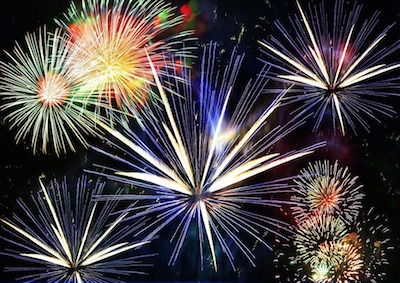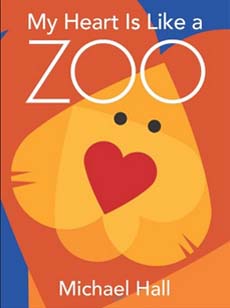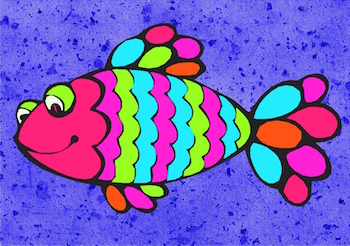1.9 Literary Devices
| Site: | Cowichan Valley School District - Moodle |
| Course: | ELA5, CSS, Sferrazza |
| Book: | 1.9 Literary Devices |
| Printed by: | Guest user |
| Date: | Wednesday, 31 December 2025, 2:23 PM |
Learning Targets
By the end of this lesson, you should be able to say YES to the following questions:
- Can I identify literary devices and understand their importance in descriptive writing?
- Can I create vivid and interesting literary devices to make my writing more descriptive?

Writing Special Effects
Literary devices are the tools writers use to create special effects in their writing.
They are the fireworks and laser light shows that make readers say, “Oooooh! Aaaaaah!”
So let’s take a look at some of the literary devices available in your toolbox.

Imagery
Imagery is an important literary device that goes hand in hand with descriptive writing. Imagery is a vivid description that involves using the five senses. You use your senses to create an image in the reader’s mind.
Your five senses are:
| Sight | Hearing | Touch | Taste | Smell |
Go to your Descriptive Writing Journal and complete "Journal #5: Use Five Senses".
Similes
|
Similes are a way to compare two things using the words like or as. Similes help add sparkle to a sentence and provide the reader with stronger visuals. Example: Alima swims well. (This works, but it’s plain.) Try a simile... Example: Alima swims like a fish. We know fish live in the water and are excellent swimmers. By comparing Alima to a fish, we are saying she swims well. The reader can also easily visualize a fish and connect with this simile. You can make this sentence even more descriptive by adding more details to your simile description. Example: She swims like a fish with the fastest fins in the sea. Example: She swims like a fish in a rocket-powered submarine. Example: She swims like a fish escaping a shiver of sharks. The possibilities are as big as the sea! (Did you notice the simile here! :-)) |
Fish Cartoon by ArtsyBee via Pixaby |
Simile Practice
Remember, a simile is a comparison using such words as "like" or "as." Here are some examples from the book, My Heart is Like a Zoo:
 |
snappy as a crab angry as a bear bothered as a bull brave as a lion thoughtful as an owl peaceful as a portly walrus (from Hall, Michael. My Heart Is like a Zoo. New York: Greenwillow, 2010.) |
|
And a couple more: The kids fight like cats and dogs. The boy ran away like a frightened rabbit. |
|
Which of the following are similes?
Her spirits soared like an eagle when she spied her old friend.
Her hands brush the piano keys with velvet grace.
When he reached the top of the hill, he felt as strong as a steel gate.
Metaphors
|
A metaphor is a comparison between two different things. Example: You are good person. (Ack! Here is the dreaded good.) Try a metaphor instead… You are a shining star. We think of stars as shiny and bright – as something high up and hard to attain. By comparing you to a star, it means you are the kind of person who shines in life. You are bright and brilliant. You are a person of high standards. Readers get a strong visual and make connections with the word star. You do not get this with the word good. |
LH 95 star-forming region of the Large Magellanic Cloud by the European Space Agency via Wikipedia. |
Metaphor Practice
Which of the following are metaphors?
The manager is a worm for what she did to Shelia.
The clouds were ice-cream castles in the sky.
The clouds were like ice-cream castles in the sky.
Similes & Metaphors
Sometimes, people get metaphors and similes mixed up. Remember, similes say something is like or as something else. Metaphors make direct comparisons. Check out this catchy video for some great examples.
Onomatopoeia
Onomatopoeia is a word that makes the sound of the action or object. Think of it like sound effects for your descriptive writing.
Example: The birds chattered, the brook babbled, and the leaves rustled on the trees.
Onomatopoeia is well known for its use in comics.
Example: Bam! Boom! Slam!
Watch this video for more examples.
|
|
Do the activity titled, Noisy Onomatopoeia. Have fun! |
Alliteration
Alliteration is using words that start with the same sound near one another in a phrase or sentence. Alliteration is like a pop of sound that grabs your attention. It creates a rhythm of sounds which your ears tune in to - and it helps bring your writing alive for your reader.
Tongue twisters like the following are good examples of alliteration. For fun, practice saying these tongue twisters as quickly and as clearly as possible.
Example: Four fine fresh fish.
Example: Betty Botter bought a bit of butter.
Example: She sells seashells by the seashore.
|
|
Complete the task in your Learning Guide titled Create Tongue Twisters. Have fun! |
Literary Device Review
Listen to this audio below and then complete "Journal #6: Everything at Once" in your Descriptive Writing Journal. Then, to help you remember the literary terms you learned in this section, complete "Journal #7: Make a Literary Devices Poster".
Practice
Match the literary term on the left with the sample sentence on the right.



